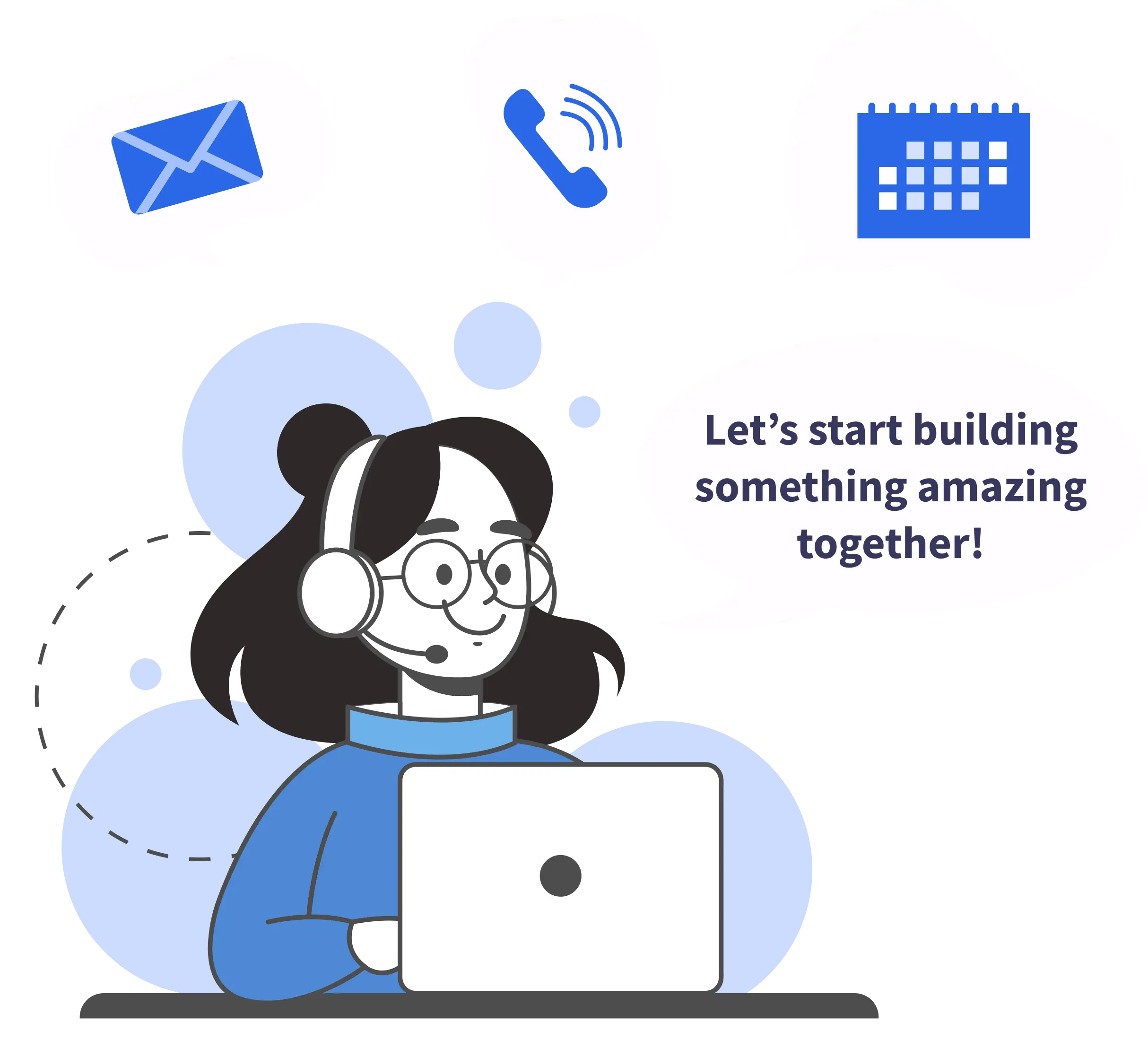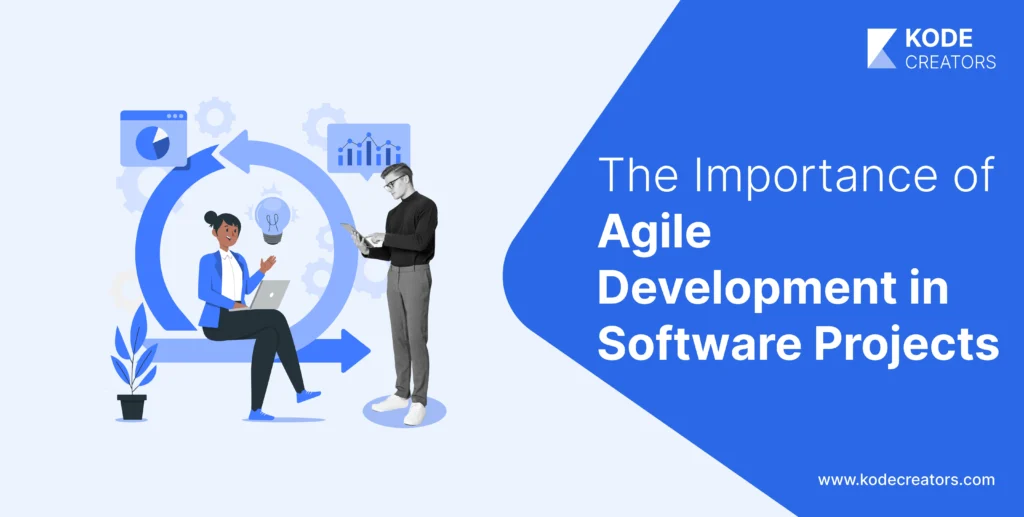When you browse Clutch for the best mobile app development company, you may be amazed to discover that there are over 35,000 businesses listed. This staggering number reflects the booming mobile app industry that is projected to reach $756 billion by 2027. Yet, this abundance of options presents a double-edged sword for decision-makers. While Clutch offers a wealth of information about mobile app developers, it can be difficult to sort through all the options.
This guide is your compass in the vast Clutch ecosystem to help you find the ideal mobile app development partner. No matter if you're a startup ready to take on the world or a company looking to innovate, we'll equip you with the insights to cut through the noise and find the company to give you an edge.
1. Defining Your App Development Needs
Before diving into Clutch's vast database of app development companies, it's crucial to clearly define your project's needs. This preparation will not only help you narrow down your options but also ensure that you can effectively communicate your requirements to potential partners.
Identifying your project requirements:
1. App Type: Determine whether you need a native app (iOS, Android), a cross-platform app, or a progressive web app (PWA).
2. Core Features: List the essential functionalities your app must have. Prioritize these features based on their importance to your business goals.
3. Target Audience: Define your user demographics, preferences, and behaviors. This information will influence design and functionality decisions.
4. Technical Specifications: Consider aspects like backend requirements, third-party integrations, scalability needs, and security measures.
5. Design Preferences: Outline your expectations for the app's user interface and user experience (UI/UX). Gather inspiration from existing apps or create mood boards to illustrate your vision.
6. Maintenance and Support: Determine if you need ongoing support, updates, and maintenance after the initial launch.
Determining your budget and timeline:
1. Budget Range: Establish a realistic budget range for your project. Consider factors like:
- App complexity
- Number of platforms (iOS, Android, Web)
- Custom features vs. off-the-shelf solutions
- Ongoing maintenance costs
2. Timeline Expectations: Define your ideal launch date and any crucial milestones. Be sure to account for:
- Discovery and planning phase
- Design and development sprints
- Testing and quality assurance
- App store approval process
- Post-launch updates and iterations
3. Resource Allocation: Determine if you have internal resources to contribute to the project or if you need a full-service solution from the development partner.
Establishing your preferred communication style and workflow:
1. Project Management Methodology: Decide if you prefer an Agile, Waterfall, or hybrid approach to development.
2. Communication Frequency: Determine how often you expect updates (daily, weekly, bi-weekly) and in what format (emails, calls, video conferences).
3. Collaboration Tools: Identify tools you're comfortable using for project management (e.g., Jira, Trello), communication (e.g., Slack, Microsoft Teams), and file sharing (e.g., Google Drive, Dropbox).
4. Involvement Level: Decide how hands-on you want to be in the development process. Do you prefer regular check-ins and approvals, or do you trust the team to make decisions independently?
5. Reporting Structure: Establish what kind of progress reports you expect (e.g., burndown charts, sprint retrospectives) and how often.
6. Time Zone Considerations: If you're open to offshore development, consider how time zone differences might affect communication and workflow.
7. Language and Cultural Fit: Determine if you have any language requirements or cultural preferences that might influence your choice of development partner.
2. Analyzing Company Profiles on Clutch
Once you've narrowed down your list of potential app development partners using Clutch's search and filter features, it's time to dive deeper into individual company profiles. This analysis will help you gain a more comprehensive understanding of each company's strengths, weaknesses, and suitability for your project.
Reading verified client reviews:
1. Review Volume and Recency:
- Look for companies with a substantial number of reviews, as this indicates a track record of completed projects.
- Pay attention to recent reviews, as they reflect the company's current performance and capabilities.
2. Review Content Analysis:
- Read through detailed reviews to understand specific project contexts, challenges faced, and solutions provided.
- Look for reviews from clients in similar industries or with projects comparable to yours.
3. Identifying Patterns:
- Note recurring themes in positive feedback (e.g., excellent communication, on-time delivery).
- Be alert to repeated criticisms or issues mentioned across multiple reviews.
4. Star Ratings Breakdown:
- Examine the breakdown of ratings across different criteria (quality, schedule, cost, willingness to refer).
- A company might excel in one area but underperform in another, helping you prioritize based on your needs.
4. Client Interaction:
- Check if the company responds to reviews, especially critical ones. This can indicate their commitment to client satisfaction and continuous improvement.
Examining project portfolios:
1. Relevance to Your Project:
- Look for projects similar to yours in terms of industry, scale, or technical requirements.
- Pay attention to the diversity of projects, which can indicate versatility and adaptability.
2. Case Studies: Dive into detailed case studies if available. These often provide insights into the company's problem-solving approach and technical expertise.
3. Visual Appeal: Assess the design quality of showcased apps, especially if UI/UX is a priority for your project.
4. Technical Complexity: Look for projects that demonstrate the technical skills required for your app (e.g., AR/VR, AI integration, complex backend systems).
5. Results and Metrics: Note any quantifiable results mentioned in the portfolio, such as user growth, performance improvements, or client ROI.
6. Client Diversity: A diverse client base can indicate adaptability and broad experience, while a focused clientele might suggest deep expertise in a specific niche.
Evaluating company size and team expertise:
1. Company Size:
- Consider how the company's size aligns with your project needs. Larger firms might offer more resources, while smaller ones could provide more personalized attention.
- Look at the number of employees listed on the Clutch profile to gauge the company's capacity.
2. Team Composition:
- Check if the company provides information about their team structure (e.g., developers, designers, project managers).
- Look for specialized roles that might be crucial for your project (e.g., UX researchers, DevOps engineers).
3. Expertise and Certifications:
- Note any mentioned certifications or partnerships (e.g., Google Certified Agency, Apple Consultant Network).
- Look for expertise in specific technologies or frameworks relevant to your project.
4. Leadership Team: Research the background and experience of key team members or company leadership if this information is available.
5. Company Culture: Look for indications of the company's values and working style, which can be crucial for a good partnership.
6. Longevity and Stability: Consider how long the company has been in business, which can indicate stability and reliability.
7. Scalability: Assess whether the company has the capacity to scale its team if your project grows or requires additional resources.
3. Key Metrics to Consider Beyond Clutch Rank
While Clutch's ranking system provides valuable insights, it's crucial to look beyond these scores to get a comprehensive view of potential app development partners. Here are key metrics that can offer additional depth to your evaluation:
Client retention rates:
1. Importance of retention:
- High client retention rates often indicate consistent quality, reliability, and strong client relationships.
- It suggests that clients are satisfied enough to continue working with the company on multiple projects or long-term engagements.
2. How to assess:
- Look for information about repeat clients in the company's Clutch profile or website.
- In client reviews, note mentions of ongoing partnerships or multiple projects with the same company.
3. Interpreting the data:
- A retention rate of 70% or higher is generally considered excellent in the tech industry.
- Consider the context – lower rates might be acceptable for companies specializing in one-off projects.
4. Red flags: Be cautious of companies with very low retention rates or those who seem reluctant to share this information.
5. Long-term partnerships: Pay special attention to mentions of multi-year partnerships, as these indicate strong, lasting client relationships.
Years of experience in your specific industry:
1. Industry-specific expertise:
Look for companies with a track record in your industry, as they'll understand sector-specific challenges and regulations
2. Depth of experience:
Consider not just the years, but the variety and complexity of projects within your industry
3. Assessing adaptability:
For rapidly evolving industries, ensure the company has kept pace with technological advancements
4. Case studies and success stories:
Examine detailed case studies related to your industry to understand the company's approach and results
5. Team expertise:
Look for information about team members' backgrounds and whether they have industry-specific certifications or experience
6. Industry partnerships:
Check if the company has partnerships or affiliations with industry-specific organizations or technology providers
7. Balancing specialization and versatility:
While industry experience is valuable, also consider if the company has cross-sector experience that could bring fresh perspectives to your project
8. Client testimonials:
Look for testimonials from clients in your industry, paying attention to specific challenges they faced and how the company addressed them
9. Industry-specific metrics:
Assess if the company understands and can deliver on key performance indicators (KPIs) relevant to your industry
4. Importance of Case Studies and Portfolio Analysis
1. How to assess relevance to your project:
Industry alignment: Look for case studies in your specific industry or related fields.
Project scope: Compare the scale and complexity of showcased projects to your own.
Technology stack: Ensure the company has experience with technologies relevant to your project.
Target audience: Consider if they've developed apps for similar user demographics.
Business objectives: Look for projects that aimed to solve similar business challenges.
2. Identifying innovation and problem-solving skills:
Unique solutions: Look for creative approaches to common industry problems.
Technological advancements: Note any cutting-edge technologies or techniques used.
Adaptability: Assess how the company handled unexpected challenges or pivots during projects.
Scalability solutions: Look for examples of how they've built scalable and future-proof applications.
Integration capabilities: Note their experience in integrating various systems or APIs.
3. Evaluating design aesthetics and user experience:
Visual appeal: Assess the overall look and feel of their portfolio apps.
Consistency: Look for a cohesive design language across different projects.
User-centric design: Evaluate how intuitive and user-friendly the interfaces appear.
Accessibility: Check if they mention or demonstrate accessibility features in their work.
Performance metrics: Look for mentions of improved user engagement, retention, or satisfaction.
5. Contacting and Interviewing Potential Partners
Preparing a list of critical questions:
Development process: "Can you walk me through your typical app development process?"
Team structure: "Who would be working on my project, and what are their roles?"
Technology expertise: "What's your experience with [specific technology relevant to your project]?"
Timeline management: "How do you ensure projects stay on schedule?"
Quality assurance: "What's your approach to testing and quality control?"
Post-launch support: "What kind of support do you offer after the app is launched?"
Intellectual property: "How do you handle IP rights and code ownership?"
Scalability: "How do you ensure the app can scale as my business grows?"
Assessing communication and responsiveness:
Initial response time: Note how quickly they respond to your initial inquiry.
Clarity of communication: Assess how well they explain technical concepts.
Proactiveness: Look for companies that ask insightful questions about your project.
Availability: Discuss their preferred communication channels and frequency.
Cultural fit: Evaluate if their communication style aligns with your company culture.
Language proficiency: For offshore teams, assess their English language skills if relevant.
Requesting technical approach and project estimates:
Detailed proposal: Ask for a comprehensive proposal outlining their suggested approach.
Technology stack: Request justification for their chosen technologies.
Project phases: Ask for a breakdown of the project into clear phases or sprints.
Time estimates: Request time estimates for each phase of the project.
Cost breakdown: Ask for a detailed cost structure, including any potential additional expenses.
Resource allocation: Inquire about the team composition and time allocation.
Risk assessment: Ask them to identify potential risks and their mitigation strategies.
Deliverables: Clarify what specific deliverables you can expect at each project stage.
Flexibility: Discuss their ability to adapt the approach if project requirements change.
6. Comparing Proposals and Quotes
1. Understanding pricing models (fixed vs. time and materials):
Fixed Price Model:
Definition: A set price for the entire project, regardless of time or resources used.
Pros:
- Predictable budget
- Clear scope from the outset
- Lower risk for the client in terms of cost overruns
Cons:
- Less flexibility for changes
- May include padding for unforeseen issues
- Potential for quality compromises to meet the fixed budget
Best for:
- Well-defined projects with clear requirements
- Smaller, short-term projects
- Clients with strict budgets
Time and Materials (T&M) Model:
Definition: Billing based on the actual time spent and resources used on the project.
Pros:
- Flexibility to adapt to changing requirements
- Transparency in resource allocation
- Often results in higher quality as developers aren't rushed
Cons:
- Less predictable final cost
- Requires more client involvement and oversight
- Risk of project extending beyond initial estimates
Best for:
- Complex projects with evolving requirements
- Long-term projects or ongoing development
- Clients who prioritize quality and flexibility over fixed costs
Hybrid Models:
- Some companies offer a mix of both, such as a fixed price for the initial phase and T&M for subsequent development.
- This can provide a balance between budget predictability and flexibility.
2. Evaluating proposed timelines and milestones:
Realism: Assess whether the proposed timeline seems realistic based on your understanding of the project scope.
Breakdown: Look for a detailed breakdown of phases or sprints, not just a final delivery date.
Milestones: Check for clearly defined milestones that align with your business objectives.
Dependencies: Make sure the timeline accounts for external dependencies (e.g., content delivery, third-party integrations).
Buffer: Look for built-in buffer time for unexpected issues or changes.
Client responsibilities: Note any timeline dependencies on your team's input or decisions.
Comparison: Compare timelines across proposals to identify any significant discrepancies.
Flexibility: Assess how the company plans to handle potential delays or scope changes.
Resource allocation: Ensure the timeline aligns with the proposed team structure and availability.
Testing phases: Check that adequate time is allocated for testing and quality assurance.
3. Assessing post-development support and maintenance offerings:
Support duration: Look for details on how long the company provides post-launch support.
Support channels: Check what methods of support are available (e.g., email, phone, ticket system).
Response times: Look for guaranteed response times for different issue severities.
Bug fixes: Understand their policy on fixing bugs discovered post-launch.
Update schedule: Ask about their approach to regular updates and performance optimizations.
Security patches: Ensure they have a process for quickly addressing security vulnerabilities.
Scalability support: Check if they offer assistance with scaling the app as your user base grows.
Feature additions: Understand their process and pricing for adding new features post-launch.
Knowledge transfer: Look for provisions to train your team on app maintenance.
Data backups: Ask about their policy on regular data backups and disaster recovery.
Transition plan: If you plan to eventually take over maintenance, ask about their transition process.
Cost structure: Understand whether support is included in the initial cost or requires a separate contract.
Service Level Agreement (SLA): Look for a clear SLA that outlines all support terms and conditions.
When comparing proposals and quotes, it's crucial to look beyond just the bottom-line price. Consider the pricing model that best fits your project's nature and your organization's working style. Evaluate the proposed timelines critically, ensuring they align with your business goals while remaining realistic.
Finally, don't underestimate the importance of post-development support – a comprehensive support and maintenance plan can be the key to your app's long-term success and evolution.
Conclusion:
Choosing the right app development partner on Clutch requires a strategic approach. While Clutch's rankings and reviews provide valuable insights, they shouldn't be your sole deciding factor. Consider your project's unique needs, analyze company portfolios, and engage potential partners directly. Combine Clutch's data with your own research and evaluation to find a development team that not only possesses the right technical skills but also aligns with your vision. To succeed digitally, make sure you find a partner who understands your app idea and can turn it into a reality.












